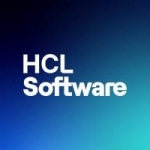
System Administrator at a financial services firm with 1,001-5,000 employees
High availability ensures uninterrupted operations for users
Pros and Cons
- "Automic Automation allows us to serve the service without interruptions."
- "The support and knowledge of incident management could be enhanced. There have been unresolved issues persisting for years, affecting customer satisfaction."
What is our primary use case?
I am a systems administrator and primarily responsible for maintaining the physical servers, databases, upgrades, managing vulnerabilities, and granting permissions to our customers who use it. Although I do not use the software personally, it serves housekeeping purposes.
What is most valuable?
Automic Automation allows us to serve the service without interruptions. It supports high availability by operating multiple servers concurrently, which means users do not experience outages or the need to log in again, even if some servers are updated. This seamless operation is crucial for us as administrators.
What needs improvement?
The support and knowledge of incident management could be enhanced. There have been unresolved issues persisting for years, affecting customer satisfaction. Improvement is needed in both the response time and the depth of problem resolution provided by support.
For how long have I used the solution?
I have been working with the solution for two years now.
Buyer's Guide
Automic Automation
September 2025
Learn what your peers think about Automic Automation. Get advice and tips from experienced pros sharing their opinions. Updated: September 2025.
868,787 professionals have used our research since 2012.
What was my experience with deployment of the solution?
It's easy because it was installed several years ago, and we only conduct upgrades now. The upgrade process is straightforward with internal scripts to update data in specific folders. The main challenge is performing the upgrades multiple times across test, development, QA, and production environments.
What do I think about the stability of the solution?
The stability is high, rated as nine. There is minimal downtime, and overall, it functions reliably.
What do I think about the scalability of the solution?
I hold scalability in high regard, giving it a perfect score of ten. The solution effectively supports our existing user base and is equipped to scale further.
How are customer service and support?
The quality of customer service is lacking. Previously, support was more proactive and involved live sessions to resolve issues. Recently, support tends to delay resolving problems, asking repetitive questions without providing solutions.
How would you rate customer service and support?
Negative
Which solution did I use previously and why did I switch?
I have worked with Control-M from BMC Software previously. While I prefer Control-M's visual interface, Automic Automation offers its own unique set of job scheduling elements. Over time, I have acclimated to Automic Automation’s approach and can manage and troubleshoot within its environment.
How was the initial setup?
The initial setup was done years before I joined, and I do not have information about it.
What was our ROI?
As a rough estimate, Automic Automation has helped reduce workload failure rates by fifty percent. However, the reduction largely depends on the business unit in question.
What other advice do I have?
Overall, I would rate Automic Automation as an eight. I would recommend it because it is stable, scalable, and supported by one of the major companies in IT services. However, having two schedulers can be beneficial to ensure license negotiations are feasible. I rate the overall solution as an eight.
Which deployment model are you using for this solution?
On-premises
Disclosure: PeerSpot contacted the reviewer to collect the review and to validate authenticity. The reviewer was referred by the vendor, but the review is not subject to editing or approval by the vendor.
Last updated: Apr 11, 2025
Flag as inappropriatePrincipal Applications Development at a tech vendor with 10,001+ employees
Job scheduling is easy and customer service responds quickly
Pros and Cons
- "The scheduling feature is very user-friendly."
- "The scheduling feature is very user-friendly."
- "They could improve by providing more control features for schedules. For example, we can hold a job, and then it could stop the job in the actual end application. They could improve such capabilities."
- "They could improve by providing more control features for schedules."
What is our primary use case?
We use it for scheduling cloud jobs and on-premises jobs.
What is most valuable?
The scheduling feature is very user-friendly.
What needs improvement?
They could improve by providing more control features for schedules. For example, we can hold a job, and then it could stop the job in the actual end application. They could improve such capabilities.
For how long have I used the solution?
Automic Automation was probably implemented back in 2017.
What do I think about the stability of the solution?
Sometimes, I see performance issues when there are a lot of jobs running. Otherwise, it is pretty good. It is very stable compared to others. We rarely see issues.
What do I think about the scalability of the solution?
Scalability is good. We started using it more often, so scalability is good.
How are customer service and support?
Customer service is good. They are pretty quick. A couple of times I faced issues, but maybe the other person who was working was not there. Most of the time, they are good and on time.
How would you rate customer service and support?
Positive
Which solution did I use previously and why did I switch?
Other teams used Appworx which was an old product. Appworx was bought by Broadcom. Because we have been using other products by Broadcom, we bought this.
I am only exposed to Automic Automation. I have not used other products.
How was the initial setup?
I was not involved in the initial setup. I took over sometime in 2021. I did one upgrade with their support and development team's help, and it was smooth when they were there. I managed it myself for production because they provided the steps and did a recording, so I was able to understand the process.
It does not require much maintenance from our end. We renew the maintenance contract every year, but we have not used that much. The product is efficient.
What's my experience with pricing, setup cost, and licensing?
The pricing was client-wise, but they are changing it to execution-wise pricing. So, we are in negotiation.
What other advice do I have?
Overall, I would rate Automic Automation an eight out of ten.
Disclosure: PeerSpot contacted the reviewer to collect the review and to validate authenticity. The reviewer was referred by the vendor, but the review is not subject to editing or approval by the vendor.
Last updated: Mar 20, 2025
Flag as inappropriateBuyer's Guide
Automic Automation
September 2025
Learn what your peers think about Automic Automation. Get advice and tips from experienced pros sharing their opinions. Updated: September 2025.
868,787 professionals have used our research since 2012.
Lead Engineer at a consultancy with 1,001-5,000 employees
Reliable, easy to use, and helpful for managing simple and complex workflows
Pros and Cons
- "Since we bought it, we have not had any big issues. We are satisfied with it. We are able to run multiple jobs. We can build and run complicated jobs. There are no issues."
- "Integration with the cloud is an area for improvement. They have to make it somehow fit or usable for cloud use cases. Right now, it works great for our on-prem data center, but they have to come up with a very good reason why people should be using it in the cloud."
What is our primary use case?
It is an automation tool. We build the workflows and Linux and Windows servers with it, particularly for running client jobs and databases. We use it with a lot of big data ecosystem tools, such as Hadoop or HDFS.
We have automated regular ETL processes such as data transformation. They are loading data into databases and the HDFS file system.
We use it for data transfer jobs between servers. It is being used for SFTP-type jobs, and we run a lot of Python-based things with Automic.
It deals with business-critical processes. It is an important tool for us. For a lot of backend work, we use Automic Automation to run all kinds of jobs. We have some very complex jobs, but we also use it for some basic jobs. It is being used for very critical or high-priority jobs and complicated workflows with hundreds of jobs.
How has it helped my organization?
It has been easy for us to manage complex workloads using Automic Automation. The user interface allows us to zoom into a particular section of a complicated workflow. If we have 30 different jobs and scripts tied together in a workflow, we can use the graphical interface to work on one section of the job on our screen. We can also embed one workflow into another. If there is a complicated workflow, we can bunch it all into one workflow and embed that one into a different workflow. This way, we can manage more complicated workflows.
It is easy to use. We previously had a thick client which was Java-based, and now, we have the web-based one. Both have been easy to use. Building jobs and doing the admin side of things, such as monitoring jobs, checking reports of the jobs, and checking job statistics has been easy. It is one of the easy-to-use tools.
We could see its benefits immediately after deploying it. We were replacing a legacy tool with Automic. It was a new solution, and we could see all the new features in it.
We have a lot of alerting features and notification features. It even has a feature to notify us when a job takes longer than usual. If our workflow usually takes two hours to run, but it is taking longer, Automic Automation can notify us. It helps to reduce the error or failure rates.
Automic Automation has freed up staff to do other things more. By automating routine things with Automic, they can move on to doing other things. It surely frees up people's time. It is saving time for our staff.
Automic Automation helped reduce our operational costs. We used to get called often with our old tool because of more failure rates, agents going down, etc. In that sense, it is saving time for staff. If more tickets are generated, we would have to hire more people offshore. With fewer tickers and fewer job failures, we need fewer people.
Automic Automation has helped improve our ability to meet SLAs by being more reliable and more stable. It is a stable tool. Our jobs are not failing because technology is failing or agents are going down or not responding.
What is most valuable?
Since we bought it, we have not had any big issues. We are satisfied with it. We are able to run multiple jobs. We can build and run complicated jobs. There are no issues. The user interface and other things are easy to use, and people are generally happy with the tool.
We use Automic for both legacy and modern systems. We have automated Linux workflows, shell scripts, database jobs, and big data jobs such as HDFS jobs and Spark jobs.
What needs improvement?
Integration with the cloud is an area for improvement. They have to make it somehow fit or usable for cloud use cases. Right now, it works great for our on-prem data center, but they have to come up with a very good reason why people should be using it in the cloud.
For how long have I used the solution?
We got the tool in 2015, so it has been nine years.
What do I think about the stability of the solution?
It is stable. We have not had any issues related to stability.
What do I think about the scalability of the solution?
It is scalable. We only have a two-server cluster. We never had a need for more than that. We have the licenses to add more servers in case we need more throughput from Automic.
How are customer service and support?
I have interacted with them a lot of times. They can be better, but overall, they are okay. If we have a severe or high-priority issue where we need help immediately, we get very experienced engineers, but if it is a routine issue, there are a lot of emails back and forth. So, for low-priority issues, there can be some improvement.
How would you rate customer service and support?
Neutral
Which solution did I use previously and why did I switch?
We used to use a tool called Redwood Cronacle previously. We got separated from our parent company, and our managers had more autonomy to select the tech stack and switch to a different technology.
So, we had an old tool before, and we wanted to replace it. Back in 2015 or 2016, when Atomic was selected as a vendor, we were looking at all the features, the integrations with HDFS, and the agent architecture they have. We were also looking for the stability of the tool. With the previous tool, we had a lot of stability issues, such as agents going off, so we were looking for a more stable tool. We also wanted to have a more modern tool.
How was the initial setup?
Given the number of jobs we had, it took us a long time to move to it, but we expected that. We were able to do it within the allotted time. In that sense, we did not have any unforeseen issues when we moved to Automic Automation.
Given that we had hundreds or thousands of jobs, it took us about six months to complete the move. We totally deprecated our old tool and moved 100% of our jobs to Automic Automation.
It does not require anything big in terms of maintenance. It just requires upgrades. Other than that, there is nothing. The platform is stable.
What's my experience with pricing, setup cost, and licensing?
They have increased the license price a little bit. It is more than what we expected about two years ago. So, there could be some surprises when it comes to pricing.
What other advice do I have?
It is an easy-to-use tool. You do not have to spend too much time learning the interface and other things. It is a stable tool. It is reliable.
We have not used the predictive modeling provided by the AAI capability. We tried it for a while, but we did not have any advanced use cases where we had to dig deep into the system. We have some basic reports, and people seem to be happy with that.
We predominantly use it for on-prem jobs. We never tested it on the cloud. It seems complicated. It needs a lot of setup such as opening the network and the network's firewalls and other things. It seems difficult. We may also need a different type of licensing to run from the agents in the cloud, so we did not try it. In the future, we may use Automic Automation with the cloud.
I would rate Automic Automation a nine out of ten.
Disclosure: PeerSpot contacted the reviewer to collect the review and to validate authenticity. The reviewer was referred by the vendor, but the review is not subject to editing or approval by the vendor.
Team Leader for Administrators at a tech vendor with 10,001+ employees
Comprehensive, integrates well, and provides a single point of view
Pros and Cons
- "It is very flexible in terms of using the functionalities and build processes. The biggest benefit perhaps is that we have so many possibilities in UC4 or Automic Automation to reach the target. We can more or less build each requirement from our customers."
- "In case we run into performance issues, it is sometimes hard to find out what is the real cause for it."
What is our primary use case?
We have many different use cases. One use case is to back up all our servers. This is a big usage. The next one is to schedule things on SAP systems. We have SAP reports. We have processes where different SAP systems are involved and we can build up dependencies. We create business process flows. This is a big use case.
We use Automic Automation for managing databases, such as SQL databases, Oracle databases, and SAP databases. We have customers who use UC4 for general monitoring, system jobs, and other things. These are the main use cases.
We have some business-critical processes. For example, if a file is there, then the file has to be loaded to SAP. The customers can then, for example, print the papers to transport the goods. If our UC4 process does not happen, the papers cannot be printed and the goods cannot be shipped to a customer.
Some departments use it to handle the databases. If the process is stuck, then perhaps for Oracle databases, the archive files will not be moved to another folder, and the folder will grow and grow. There would be no space on the file system, and the application that is using the database cannot work anymore. We have some very critical processes and also many processes that are not so critical.
How has it helped my organization?
The biggest benefit is that we have one point of view on the processes. We can build dependencies, and we can have access to different platforms. We can integrate different platforms. This is the biggest benefit of Automic Automation.
Our systems are very big. At times, we have more than 11 million jobs per day or executions per day, and we have struggled with this amount in the past, but Broadcom has improved the application so that we can avoid such struggles. We have a big environment. When new functionality is implemented in the system, very often, we are the first ones to struggle with something, and then Broadcom has to improve it. Normally, it is a very stable product for us.
We have some very big workflows, which include more than a thousand objects, so it can be very hard for us to have a good overview of it all. That is why we build our processes in small steps. This way, it is much easier to handle them as one very big workflow. This is our experience, and we try to go in this direction.
We have the agent, or we can use the REST API. It is easy to implement in the end. The big challenge is that if you have many components in your systems, you have to update the components from time to time, and this, of course, is a big effort.
Automic Automation has saved time and helped free up staff for other projects or tasks. We automate many things with Automic Automation. If we had to do these things every day manually, we would lose a lot of time. It helps us save time for other projects.
Automic Automation has helped us reduce our operational costs. I am from the admin team, and we have to roll out the new version of our agent. We have more than 30,000 agents in our system. To update each agent manually, we would have to log onto the server, move the binaries to the target system, stop the agent, and start the agent. It would take a very long time to do this manually for 30,000 agents. With Automic Automation, we have the possibility to just say that we want to update this agent. The binaries will be moved to the platform, and the agent will be stopped and started automatically. We do not have to log in to the servers. It will be done in the background. Therefore, it is a big help for us in saving time.
What is most valuable?
It has so many possibilities, and many functions are important for us. We use it very often, so it is difficult to say which is the best one. In general, the complete functionality that Broadcom offers is very good. It is very flexible in terms of using the functionalities and build processes. The biggest benefit perhaps is that we have so many possibilities in UC4 or Automic Automation to reach the target. We can more or less build each requirement from our customers.
What needs improvement?
The visibility and control that Automic Automation provides are good, but it could be improved. In case we run into performance issues, it is sometimes hard to find out what is the real cause for it.
At the moment, the REST interface does not include everything. It was improved a little bit, but some functionality is still open. This is something that can be improved. There is nothing critical that is missing for that we cannot use Automic Automation.
For how long have I used the solution?
I have been using this solution for more than 25 years.
What do I think about the stability of the solution?
I would rate it an eight out of ten for stability.
What do I think about the scalability of the solution?
It is easy to scale, but the database should support that scalability. We can scale processes, and it is easy, but in the end, the database must be able to handle that. We sometimes struggle a little bit there.
In our experience, when we want to scale, we do, but we then see some negative side effects, and we have to go down again. We have to contact the support. In most cases, we need a patch.
How are customer service and support?
Some errors are checked directly if you create an object, and for some errors, it is always best if Broadcom checks whether it fits or not, but, of course, not all of them can be done in this way. If we run into an error that we cannot solve immediately at our end, we have the possibility to create a support ticket. We have the possibility to specify the priority one, two, three, or four. If it is priority one, we normally get very fast support on the phone, and they help. If it is a normal error, a ticket is created, but it takes time to get a solution, which is okay.
I have good experience with technical support. We also have a TSE partner. If we have some problems, we can contact this colleague directly. That makes life very easy.
How would you rate customer service and support?
Positive
Which solution did I use previously and why did I switch?
In the mainframe environment, we had our own solution, but it was a long time ago. It is not comparable with Automic Automation.
How was the initial setup?
We are not using cloud environments at the moment. We work only with on-premises environments. We have databases. At the moment, we are focusing on on-prem because most of the automations are still on-prem. I guess it will change in the future, but I do not see the change to the cloud environment happening in the next two years.
I have not practiced the deployment process, but I know that we could support some of our customers. They really benefited because of this.
In terms of maintenance, maintaining the processes is easy, but before we roll out a new version, we have to test all the things. This is a big effort for us every time. We struggle every time a new functionality is implemented because in most cases, the product is tested in a smaller environment, and it works. However, we usually reach the limit and then we have to adapt the product. We have to get in touch with Broadcom for that. Before we can roll out a new version, we have to test it properly. This is a big challenge on our end. If you are a customer with a small environment, it is easier to install the application because you have not adapted many things. You can more or less use it as you installed it, but in a bigger environment, you have many adaptations.
What about the implementation team?
We have our TSE as the contact person.
Which other solutions did I evaluate?
We do an evaluation from time to time. We check out the market from time to time to see if there is perhaps a better product, but at the moment, we are concentrating on this solution.
What other advice do I have?
I could recommend Automic Automation, but it is a bit challenging if you want to implement it in a very big environment. If it is a small environment, it can easily handle that.
I would rate Automic Automation a nine out of ten.
Disclosure: PeerSpot contacted the reviewer to collect the review and to validate authenticity. The reviewer was referred by the vendor, but the review is not subject to editing or approval by the vendor.
Senior Consultant at a manufacturing company with 10,001+ employees
Good automation, handles complex jobs, and is easy to manage
Pros and Cons
- "We can run the solution on both cloud and on-prem environments."
- "We can't migrate the users from one master to another master or product to product. We have to do it manually."
What is our primary use case?
We primarily use the solution for automation. It's used mostly to automate plant activity and billing and finance tasks. It's also used for job applications.
How has it helped my organization?
Within the architecture in our company, one master user can execute more than one job per day. It's making it faster than manual work - and it's easy for them to monitor and configure everything.
We've witnessed a few benefits. The main one is the easy-to-use console. The GUI interface makes the solution easy to adopt and it's a powerful tool that is easy to manage. We can handle a large amount of jobs while decreasing human effort.
What is most valuable?
We do use the solution for business-critical processes.
We have a lot of complex jobs. They are using multiple databases to connect to one master. We execute jobs on multiple databases. I'm currently working with Broadcom and have created a few alert mechanisms for bug alerts. When we find bugs and report them, we can get hard fixes applied.
The solution's ability to handle large volumes of data is very good. I've been happy with it. We can improve so many things by 20% or more. It's a very costly product, and the client who is paying for it needs to see results, and so far, they are.
The GUI interface is very good. It's user-friendly, even for new users. Within a few days, they can learn the solution. It's easy to learn and not overly complex.
In one console, we can run multiple executions and manage the load balancer, et cetera.
It's very easy now to manage complex workflows using this product. We can maximize agent performance. We can execute a large number of jobs. Compared to other tools, it's much more efficient.
The visibility and control is excellent.
The predictive modeling provided by AI is very good. We can implement fixes automatically as well.
Its predictive modeling has been very critical. Jobs are executing on this and that is very important. Even if the master is down for an hour, the company can lose millions of dollars, so having that predictability is key to managing downtime in advance.
We can reduce our job workload failure rates across multiple cloud environments. For example, if we have servers and we are installing agents in the master, we can create agents on multiple servers and we can execute jobs on both agents at one time. That way, if one server goes down, there is no disruption. The jobs will execute on the second agent - and no human interface is required for the task.
We've been able to save time. Previously, we were dependent upon so many team members, and it would take one week to create one console or one tool. However, now, within three or four hours, we are creating one master and agents. We save six days.
It's comprehensive - but we do have an audit feature. We have a separate audit team and in the tool itself, we have audit automation so we can run audits on a quarterly basis. Sometimes we have big queries and the data is massive and difficult to manage. However, with this product, we can schedule a job and, in three months, we can get a report directly without wasting time. It's safer in terms of audit requirements.
With the tool, we've been able to save on operational costs. With other tools, we had difficulty with management, and there were so many dependencies on so many teams. With one console, we can create multiple agents that run on Oracle and have one point of control with multiple features.
We can run the solution on both cloud and on-prem environments. We're 90% cloud currently. However, 10% is still left on-prem. Our plan is to move 100% to the cloud.
What needs improvement?
We can't migrate the users from one master to another master or from product to product. We have to do it manually.
For a number of job executions, they aren't confirming the resources needed, like CPU, et cetera. We might find later that more CPU is being used and that can impact our whole plan. We've already communicated this to them, however.
For how long have I used the solution?
I've been working with the solution for more than a year.
What do I think about the stability of the solution?
The stability is very good. I'd rate it nine out of ten.
What do I think about the scalability of the solution?
More than 40,000 users in our company are using it.
The scalability is very good. I'd rate the ability to scale seven or eight out of ten.
How are customer service and support?
We have Platinum support. They are awesome. Within 30 minutes to an hour, they tend to fix issues.
How would you rate customer service and support?
Positive
Which solution did I use previously and why did I switch?
I am working with multiple automation tools, such as Stonebranch and AppWorx. We found it hard to manage so many things. With this product, the GUI is good and it's very easy. We have multiple features and multiple options.
How was the initial setup?
At first the solution was difficult to implement. However, nowadays, the process has changed with newer versions. It's easier to create a folder and access the master. We had seven people working on the deployment. It took one year to deploy. That said, creating a master agent only takes one day.
The solution is easy to maintain.
What was our ROI?
We have witnessed an ROI. The investment has been positive and the customer is happy with the product. It's 100% helped us improve our ability to meet our SLAs. We used to struggle to meet a seven-day SLA with so many dependencies and teams. Now, within two hours, we can deliver what we promised to the customer and that's 100% within our SLA.
What's my experience with pricing, setup cost, and licensing?
The solution is costly. However, we do get so many features, it's worth the cost.
What other advice do I have?
We're a customer and end-user.
This is a powerful tool. It has a good interface and it is easy to manage. Even a non-technical person can work with it. Within a week or two people can learn enough about it to begin working with it.
I'd rate the solution ten out of ten.
Which deployment model are you using for this solution?
Public Cloud
Disclosure: PeerSpot contacted the reviewer to collect the review and to validate authenticity. The reviewer was referred by the vendor, but the review is not subject to editing or approval by the vendor.
Oracle Utilities Admin at a energy/utilities company with 201-500 employees
Efficient process coordination with intuitive interface but has costly upgrades
Pros and Cons
- "Scalability is good."
- "Automic's database structure is not intuitive. When upgrading, the system breaks down frequently and we require a lot of support."
What is our primary use case?
We use Automic to coordinate batch processes for Oracle Utilities products like customer care and billing, and work and asset management. It helps us load customer data, meter reads, and process billing. We also use it to make calls to Solar processes and for file transfers across servers.
What is most valuable?
I like the GUI interface of Automic. We use it to coordinate batch processes and it's beneficial for orchestrating various processes, especially in the context of Oracle Utilities products.
What needs improvement?
Automic's database structure is not intuitive. When upgrading, the system breaks down frequently and we require a lot of support. More visual aids in the documentation would be helpful.
For how long have I used the solution?
Probably four or five years, but I started focusing on it more in the last two or three years.
What do I think about the stability of the solution?
It's pretty stable once you fix the initial issues after deployment.
What do I think about the scalability of the solution?
Scalability is good.
How are customer service and support?
They are good and helpful, but many issues require support tickets due to inadequate documentation.
How would you rate customer service and support?
Positive
What's my experience with pricing, setup cost, and licensing?
The pricing has been increasing significantly over the years, raising operational costs instead of reducing them.
Which other solutions did I evaluate?
We've been looking into other possible replacements because the pricing with Broadcom has increased significantly.
What other advice do I have?
I would rate Automic a six due to its high price and other issues. For new users, I'd advise taking training courses and learning to read log files effectively.
Which deployment model are you using for this solution?
Public Cloud
If public cloud, private cloud, or hybrid cloud, which cloud provider do you use?
Other
Disclosure: PeerSpot contacted the reviewer to collect the review and to validate authenticity. The reviewer was referred by the vendor, but the review is not subject to editing or approval by the vendor.
CEO at a computer software company with 11-50 employees
It helps simplify complex workloads, provides excellent visibility, and improves compliance processes
Pros and Cons
- "Automic Automation's primary advantage over competitors lies in its robust SAP integration."
- "I'd like AI to be able to consider how to monitor volume based SLAs as opposed to time based SLAs."
What is our primary use case?
As a former customer, before co-founding a specialist automation consultancy, I used Automic Automation in the banking and financial services sector. However, Automic's versatility extends far beyond finance, as it is employed across numerous sectors, including manufacturing, utilities, pharmaceutical, government, and retail. It's impossible to think of industry where Automic isn't a valuable tool.
When I worked in the banking sector, scalability and low latency were paramount. These factors and the ability to run processes across multiple platforms – from enterprise systems to mainframes and now the cloud – were our primary drivers. Today, customers increasingly seek cloud-ready solutions, and Automic's ability to be hosted on the cloud is a significant advantage. Notably, the SaaS version of Automic is equally powerful (with the same features and functions) as its on-premise counterpart, which is rare in the Workload Automation marketplace. Ultimately, customers demand multi-platform automation solutions capable of handling cloud, enterprise, and sometimes mainframe environments, while delivering scalability and low latency. Automic Automation effectively addresses all these critical requirements.
How has it helped my organization?
Most processes automated with Automic are business critical. Maintaining a highly performing, robust and secure Workload Automation infrastructure is critical to any organisations well-being.
Automic's scalable infrastructure is a key differentiator in the market. It offers a comprehensive suite of advanced job types and is a market-leader in this respect. Moreover, its ability to integrate seamlessly with in-house solutions through programmatic and web service interfaces is unparalleled. This flexibility allows for simple and highly complex implementations, depending on organizational needs. While transparency and supportability are essential for any workload solution, Automic's adaptability ensures it can meet diverse requirements.
Automic Automation is instrumental in supporting our growth due to its exceptional architecture. Unlike systems limited by the number or throughput of communication or workload processes, Automic's highly scalable infrastructure eliminates the need to partition it into multiple instances to mitigate latency. This inherent scalability is one of its most significant and compelling advantages.
Managing complex workloads is simplified with Automic Automation, especially now with the added visibility provided by AAI for Automic customers. This enhanced visibility and reporting is easily understandable, eliminating the need for specialized knowledge to interpret the data.
Automic provides excellent visibility and control across our clients' operating platforms. By leveraging the AAI module, we can not only monitor jobs and processes within Automic but also extend our view to external workload tools like Redwood Tidal, IBM IWS and other Broadcom solutions including AutoSys and CA 7, which is particularly beneficial for larger organizations with diverse tooling. Additionally, AAI's advanced analytics and critical path analysis enables proactive SLA managements; identifying and alerting for potential breaches in advance, providing Operations and Support teams with the opportunity to make timely interventions. This extends to modern cloud environments where processes can be tracked from Automic initiation through to platforms like Apache Airflow, eliminating visibility gaps. Furthermore, the ability to monitor processes within applications like SAP sets Broadcom apart by offering a unified view of operations across multiple platforms, applications, and automation engines.
I would give the predictive modelling provided by the AAI module a perfect score. Thank to the substantial R&D time and investment being focused on AAI, it will undoubtedly improve over time. As AAI continues to evolve to meet the ever-changing demands of the field, customer feedback is crucial in this process. As exemplified by the development of Airflow integration which was developed in response to customer needs. Airflow is a perfect example of the increasing number of cloud-based automation technologies operating in silos, which present customers challenge due to a lack of governance and support, compared to more established systems. To address this, we must encourage Broadcom to expand the range of technologies that can be observed and analyzed by AAI.
Predictive modeling is crucial for strategic planning, especially in industries with strict regulatory requirements and tight deadlines, such as banking. Early visibility into service-level agreements is essential to ensure timely market entry or regulatory report submission. Real-life examples demonstrate the value of early warnings in preventing missed deadlines and operational disruptions. Compared to organisations relying on traditional IT Operations methods, users of Broadcom's AAI module gain significant competitive advantage including enhanced efficiencies and minimised risk. For some the primary benefit of AAI is regulatory compliance, but for all customers, optimized processing allows faster time-to-market and increased competitiveness.
The primary benefits of consolidating multiple technology instances into a single, more capable, and scalable one have been increased efficiency and cost-effectiveness. Essentially, we've gotten more value from our technology investment. Additionally, this approach has enhanced configurability, and leverages Automic's market-leading security and user management features. For some customers, these factors have been crucial driving forces, as they can be implemented relatively quickly. Similarly, reporting capabilities are significantly accelerated. While achieving greater sophistication or transparency in workflows might require additional projects or process reengineering, the immediate advantages in reliability, scalability, and security are often substantial.
Migrating a competitive product to a new platform may reduce infrastructure or agent-related failures, but customers often resist changes, insisting on maintaining their existing commands, scripts, and execution methods. This "rubbish in, rubbish out" approach hinders immediate improvement. To achieve substantial benefits, we encourage customers to adopt a holistic view of their workloads, allowing us to optimize processes. For example, we transformed a customer's poorly structured, error-prone script into multiple well-managed jobs with enhanced error handling and visibility. While tools like Automic are helpful, our expertise as a service provider is crucial. As driving a Ferrari requires skill, utilizing advanced technology effectively demands specialized knowledge and governance. So, we would like to emphasize the importance of expert advice and support, regardless of the chosen technology.
Automic Automation always receives high compliance scores and is typically loved by security and compliance departments. Product security is highly configurable, enabling very precise definition of user access, based on each user's roles and responsibilities. Additionally, Service Level Agreements (SLAs) can be set and monitored, using AAI, tracking processes through their critical path across Automic and beyond.
Automic SaaS can dramatically reduce operational costs by eliminating the need for a dedicated team of infrastructure specialists working around the clock. The exact savings will vary depending on the organization's size but will likely be substantial. While it's inappropriate to quantify the savings as a reseller, it's clear that adopting SaaS can lead to significant cost reductions.
Automic Automation helps in automating and orchestrating processes across legacy and modern systems, including cloud environments.
Currently, automated environments span from cloud and enterprise systems to the mainframe. Applications include SAP, other ERP tools, and specific retail integrations like Oracle Retail. However, the extent of automation often varies depending on the customer. Manufacturing clients, for instance, require automation across ordering, parts, and delivery systems. Essentially, Automic manages the production lines of major companies, demonstrating the ubiquitous nature of workload automation across diverse systems and industries.
Thanks to AAI, I consider Automic Automation to be the industry leader in observability.
I have been using Automic Automation since 2007. It is simple to implement.
What is most valuable?
Broadcom's AAI module offers advanced predictive SLA monitoring and management reporting capabilities, integrating with ServiceNow for alerting and problem resolution. AAI provides critical path analysis and predictive alerts, analyzing and visualizing processes across diverse IT environments, including competitor tools like Redwood Tidal, IBM IWS, BMC Control-M and Apache Airflow and other Broadcom tools including AutoSys and CA7. Providing IT Operations and Support staff with a comprehensive view is particularly beneficial for large organizations, allowing them to monitor processes holistically on a single dashboard. AAI is a critical selling point for Automic, especially for corporations managing complex IT infrastructures resulting from mergers, acquisitions, or global operations.
Another advantage of Automic Automation over competitors lies in its excellent SAP integration. Its ability to seamlessly integrate with SAP systems is a key factor in winning competitive bids, as it offers unmatched flexibility and adaptability.
Automic's programmability allows for the creation of a versatile automation framework, surpassing traditional job scheduling capabilities.
Prioritizing simplicity and user experience, Automic ensures even junior staff can easily understand and operate the system. By enforcing standardized naming conventions and templates, Automic maintains control and clarity, especially in large-scale operations with millions of jobs. Ultimately, Automic's reliability, supportability, and ability to enhance operational efficiency through automation make it a standout choice.
What needs improvement?
There is little missing from the core Automic product, so I would concentrate on the key point of difference, Broadcom's Automation Analytics & Intelligence (AAI) module. In my view, AAI offers a wonderful opportunity to track processes across automation engines. Further to AAI offering observability of Apache Airflow processes, I also look forward to being able to monitor other (open-source and proprietary cloud computing platform-specific) workflow management platforms. Additionally, I'd like AAI to be able to monitor volume-based SLAs in addition to time-based SLAs.
For how long have I used the solution?
I have been using Automic Automation for 17 years.
What do I think about the stability of the solution?
I would rate the stability of Automic Automation ten out of ten.
What do I think about the scalability of the solution?
I would rate the scalability of Automic Automation ten out of ten.
How are customer service and support?
Broadcom's technical support is excellent.
How would you rate customer service and support?
Positive
How was the initial setup?
The initial deployment is straightforward. For smaller customers, it takes days; for others, it takes weeks. It certainly shouldn't take months, especially for new clients. In fact, small to medium-sized businesses should experience minimal disruption. The majority of time should be dedicated to educating the users and ensuring appropriate business practices and policies are established correctly to help make the most of Automic's power to automate processing end-to-end.
What about the implementation team?
Broadcom set the bar very high for their services partners. Partnerships are earned and only a few make the grade. Broadcom Automation Expert Advantage Services Partners and Broadcom Automation Focus Sales Partners have huge experience.
What's my experience with pricing, setup cost, and licensing?
Pricing is competitive compared to other major vendors of market-leading tools. In my experience Broadcom pricing is typically more affordable than their largest rivals.
What other advice do I have?
I would rate Automic Automation ten out of ten.
Broadcom has a positive attitude towards Workload Automation. Broadcom's Workload team exudes a sincere 'can-do' attitute. Customers can quickly access decision-makers, have their concerns heard, and receive timely responses. I see plenty of evidence of significant research and development investment in Workload Automation, making it an excellent time to be a Broadcom customer. They offer strong products and are genuinely committed to customer satisfaction.
Automic SaaS is relatively new to the market, so while most of my customers are exploring it, few are ready to implement it immediately. However, I anticipate that the majority of small to medium-sized businesses will adopt SaaS, and I believe we will be surprised by the number of large corporations that follow suit.
Maintenance is required for on-premise deployment, which typically needs upgrades every two years or so. With the SaaS deployment, however, these updates and improvements are managed by Broadcom.
I recommend Automic Automation. It is particularly well-suited for organizations that are forward-thinking and prioritize technology. I believe that if you were to create an RFP with challenging requirements for vendors, such as the ability to handle complex integrations, dynamic process flows, and Python interactions, Automic Automation would excel. Its strengths are most apparent in organizations with robust technical capabilities, but it can also be used effectively by less technically advanced companies. Ultimately, Automic Automation tends to be favoured when customers demand a high level of technical proficiency from their solutions.
Disclosure: PeerSpot contacted the reviewer to collect the review and to validate authenticity. The reviewer was referred by the vendor, but the review is not subject to editing or approval by the vendor. The reviewer's company has a business relationship with this vendor other than being a customer: Reseller
Sr. Director - Product management at a healthcare company with 10,001+ employees
The agents give me the flexibility to connect to various source and target systems
Pros and Cons
- "I like the connectors Automic has provided or the agents that give me the flexibility to connect to various source and target systems. It's pretty easy to manage complex workloads using Automic. Its user interface makes it easier for us to manage."
- "From a features perspective, we still need some agents to connect to specific systems that Automic doesn't have. Expanding their available agents would make the tool more compatible with various systems that other customers may have."
What is our primary use case?
We use Automic to schedule and automate our financial jobs. It is primarily used for our financial processes, such as closing the books at the end of the quarter or year. When closing the books, we need to load the data from one system to the other. The jobs involved in loading the data are automated through Automic. We have more than a thousand critical jobs automated through Automic that vary in complexity from simple to highly complicated.
How has it helped my organization?
Some benefits of Automic were immediate. For example, we instantly increased productivity in managing our data workload. It became effortless. While those benefits were immediate, others were long-term benefits.
It enabled us to build more complex workflows and manage all the data loads end to end in Automic, which was not possible before we implemented it. Those kinds of benefits took a bit more time. We began to realize those benefits in around a year because it took time to understand the tool, its features, and what was possible with it.
We can use Automic to manage workloads across multiple operating systems. Our systems are hosted on Windows, Linux, and the cloud. Automic's good log-capturing methodologies help us reduce workload failure rates. Those logs help us do a detailed root cause analysis, preventing those failures in the future. Some of our systems are on AWS, and some are on Azure. Our Automic installation is on Azure, so we operate across multiple cloud environments.
Automic Automation helps free up the bandwidth of our contractors and employees to focus on more important things. Our systems are financial, so they have to abide by SOC compliance, and Automic's controls and logging enable us to maintain SOC compliance.
We have achieved productivity benefits and avoided costs. We could repurpose some of our costs in other areas that we would not have prioritized otherwise.
Our financial processes have stringent requirements, especially during the quarter close and one-time close periods. Any deviation from our SLAs gets escalated, so we must be on top of all our workloads running through Automic. Real-time monitoring is helpful because as soon as the issue occurs, it sends an alert, and we don't waste time not knowing what the issue is. We know what the issue is and take action on it. We can reduce any impact due to the issue.
What is most valuable?
I like the connectors Automic has provided or the agents that give me the flexibility to connect to various source and target systems. It's pretty easy to manage complex workloads using Automic. Its user interface makes it easier for us to manage.
We can monitor job progress in real time, and the IT teams' visibility into the progress is excellent. In the event of any issues, the error messages that Automic sends help us to debug the problem.
What needs improvement?
From a features perspective, we still need some agents to connect to specific systems that Automic doesn't have. Expanding their available agents would make the tool more compatible with various systems that other customers may have.
For how long have I used the solution?
I have used Automic for about eight years.
What do I think about the stability of the solution?
We've never had a crash or any stability issues. There have been some infrastructure-related issues that caused the server to go down, but Automic has been stable.
What do I think about the scalability of the solution?
I rate Automic nine out of 10 for stability. We have not encountered any use case that we could not automate with Automic. From that perspective, the scalability is good for us. It has been able to meet all our needs.
How are customer service and support?
I rate Automic support nine out of 10. They are responsive and bring a lot of expertise to the table. We have been assigned an account executive, who provides fantastic support.
How would you rate customer service and support?
Positive
How was the initial setup?
Deploying Automic was somewhere in the middle. It wasn't too complicated, but it wasn't a cakewalk. We are on the cloud. We started on-prem, but then as a company strategy, we moved all our applications to the cloud. Automic is also on the cloud.
When we started implementing Atomic, we set a scope to implement Automic over many years, and that scope has gradually increased. In the beginning, it was a four-month project that included all our financial jobs and a solid chunk of jobs that we were trying to accommodate in our topic. After deployment, it's fairly easy to maintain Automic. You just need to do regular patching and updates.
What about the implementation team?
We generally work with IT vendor partners and service companies. The Automic team also collaborated closely with us to ensure they provided their product expertise during our migration to our scheduling tool. Four from my company were on the deployment team.
What's my experience with pricing, setup cost, and licensing?
Before I joined this company, Automic had a contract with its parent company, and their pricing was very competitive. However, when we split into multiple businesses, the contract increased significantly, becoming an expensive tool.
Make sure you understand your licensing requirements and the model that Automic offers. You have to count the nodes and the agents. As a product owner, you should know what your licensing requirement will be based on how Automic does the licensing counts.
What other advice do I have?
I rate Automic Automation nine out of 10. Before deploying Automic, you should ensure your team has developed some technical expertise so that the systems or scope that you identify for Automic automations are feasible with the tools. You should also ensure that the agents are available and that they work with the types of systems you're trying to connect.
Disclosure: PeerSpot contacted the reviewer to collect the review and to validate authenticity. The reviewer was referred by the vendor, but the review is not subject to editing or approval by the vendor.
Buyer's Guide
Download our free Automic Automation Report and get advice and tips from experienced pros
sharing their opinions.
Updated: September 2025
Product Categories
Workload AutomationPopular Comparisons
Control-M
MuleSoft Anypoint Platform
AutoSys Workload Automation
IBM Workload Automation
Redwood RunMyJobs
Stonebranch
Tidal by Redwood
ActiveBatch by Redwood
Rocket Zena
ESP Workload Automation Intelligence
HCL Workload Automation
Dollar Universe Workload Automation
AppWorx Workload Automation
Buyer's Guide
Download our free Automic Automation Report and get advice and tips from experienced pros
sharing their opinions.
Quick Links
Learn More: Questions:
- Comparing Automic Workload Automation, Automic/Appworx Applications Manager, and OpCon
- Does Automic offer automation-as-code capabilities, allowing developers to directly code automation artifacts?
- Can I improve workload automation in my company without changing our scheduler?
- Can Automic Automation be deployed on Kubernetes? And what exactly is Kubernetes?
- Does Automic Workload Automation work with Oracle Fusion Cloud?
- Which is Best: Scheduler Control M, CA or Tidal?
- When evaluating Workload Automation, what aspect do you think is the most important to look for?
- What should businesses start to automate first when starting off with an enterprise scheduling tool?
- What is the best workload automation tool in the market?
- How does Control-M rank in the Workload Automation market compared with other products?















